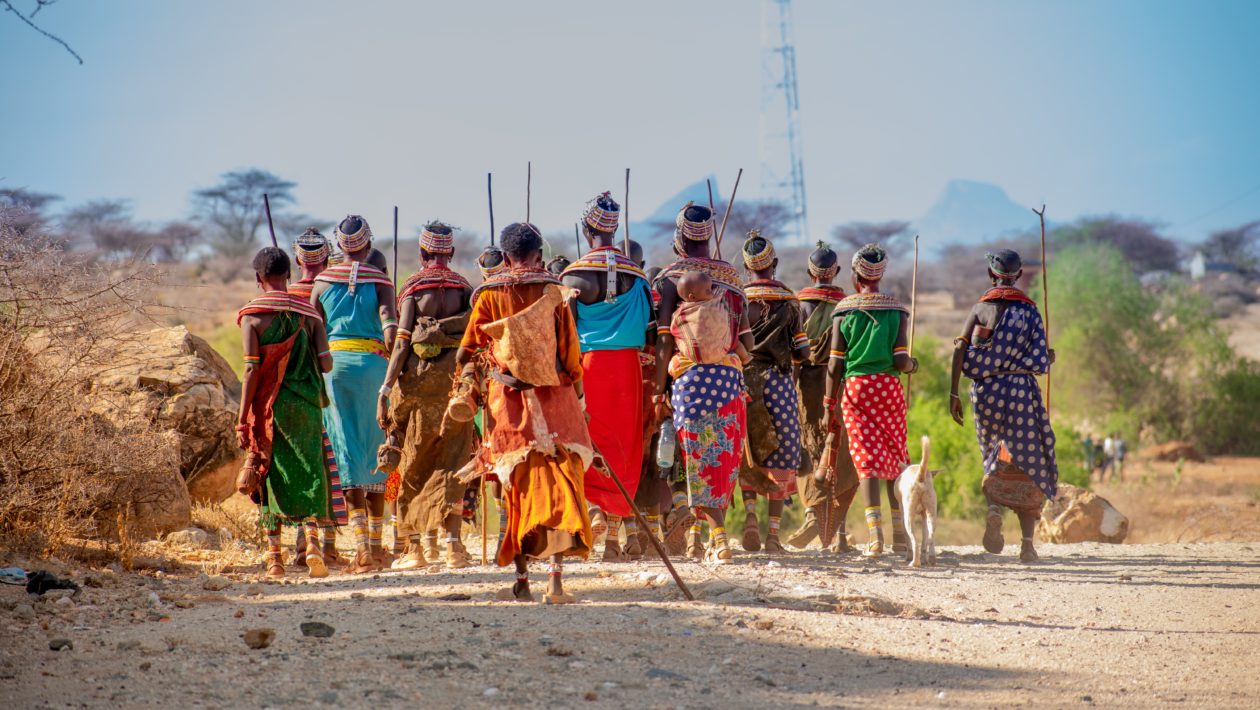Introduction
From their inception, African Indigenous churches (AICs) accepted the parallel roles of males and females in leadership. This may have been because before the advent of Christianity in Africa, women were active participants in traditional religions. Thus, when Christianity came along, women were welcomed and played an instrumental role in indigenous churches—even though their contributions were often curtailed in the mainstream church. Yet, over time, women have become more and more relegated to auxiliary positions in the church. Today, many women find themselves denied admittance to the highest echelons of church leadership.
What has caused this shift in women’s leadership roles with AICs? One of the reasons for this phenomenon may be Pauline teachings. Paul forbade women to teach or have authority over men (1 Tim. 2:12). Another reason is the hand of the colonial administration in the exclusion of women from leadership roles. In spite of these reasons, women have played an important role in the transmission of faith and Christianity in Africa.
Roho Movement
The Roho (Holy Spirit) moment began in western Kenya during the 1930s, although some accounts trace its origins back to as early as 1912. Its membership consisted mainly of the Luo community of western Kenya, eastern Uganda, and Northeastern Tanzania and was comprised of three main churches: Ruwe Holy Ghost Church of East Africa, Musanda Holy Ghost Church of East Africa, and the “Duond Warruok” (Voice of Salvation) Church; these churches are still in existence today. Since its birth, “members of all [the] Roho churches [have viewed] themselves as custodians of the Spirit” (Hoehler-Fatton, 1993, p. 4).
The Roho movement culminated in 1934 with the death of preacher Alfayo Odongo Mango. Mango was a prominent indigenous religious leader in the Roho movement—a charismatic, Spirit-filled, and strong-willed leader who possessed the gifts of prophecy and healing. He was chosen by the Anglican archdeacon Walter Chadwick as one of the first Luos to train as a catechist at the C. M. S. Normal School in Maseno (Hoehler-Fatton, 1996, p. 3). Furthermore, from 1928–1930, Mango studied at St. Emmanuel’s Divinity school in Freretown, near Mombasa. While there, he was exposed to anti-colonial resistance movements, as well as calls by Anglican churches for self-determination (K’otieno, 2018, n.p.). When serving under Chadwick’s successor, Walter Owen, Mango was appointed as deacon over an expansive territory in Luo land. However, over time his relationship with Owen became strained as Mango became involved in activism, speaking against the land disputes between Luo Kager and Luhya Wanga, who were backed by the colonial administration. Mango also advocated for African-run churches, free from European control.
The Roho movement itself experienced tremendous growth between the 1930s and 1960s (Hoehler-Fatton, 1996, p. 3), and by 1933, Mango had acquired a sizable following (Hoehler-Fatton, 1998, p. 396). However, the church’s growth, as well as Mango’s activism, kept him on the colonial authority’s radar. The group was eventually denounced by the Anglican Church, and the group withdrew, settling at Mango’s Musanda homestead, which became the church’s official headquarters.
On the fateful night of January 20, 1934, Roho congregants were gathered at Mango’s homestead for special prayers. At some point, Wanga warriors attacked the congregation; some members were speared to death (Hoehler-Fatton, 1993, p. 146). Many of the members ran into Mango’s house for safety. The attackers then set the house on fire, as well as the other buildings on the compound, and stood outside, armed, preventing anyone from escaping.
Mango’s bravery as the compound burned is recounted by Hoehler-Fatton (1993):
But Mango did not try to escape. He stood erect in the center of the house, holding a Bible in his right hand high above his head. Another Bible was tucked under his left arm. Followers heard him exclaim, “Jesus, Son of God, the sky is cracking, the hills are tumbling down!” (“Yesu wuod Nyasaye, barore, gode mukore!”) Then Mango began to sing this
Ero kamano, Yesu, ero kamano, Yesu.
(Thank you, Jesus, thank you, Jesus.)
Jawar ji duto, wod Nyasaye,
(Saviour of all people, son of God,)
Ihero ji, ihero ji duto.
(You love people, you love all people.)
Ipuonjo gi wach mari, nyaka giyie.
(You teach them your word, until they accept it)
Isetho nwa musalaba.
(You have died for us on the cross.) (p. 147–148)
The fire burned the Musanda compound to the ground. That night Mango, his assistant, Lawi Obonyo, and other church members lost their lives in the fire that is now known as the “Musanda Massacre” (Hoehler-Fatton, 1996, p. 120).
The Role of Women
Members who survived the massacre sustained Mango’s movement. Women played a major role in this process and the growth of the church. However, documentation about the group maintained by the colonial administration and missionaries only records the activities of male leaders. The women remained nameless and faceless, their efforts diminished. This was the norm at the time; women were “systematically written out of historical and anthropological records” (Ross, 2011).
However, thanks to oral stories narrated by the survivors from those earlier days, we have knowledge of the Roho women’s contributions. These women were “strong willed and defiant” (Hoehler-Fatton, 1998, p. 396). They were drawn to the religion because it gave them the freedom to preach, which was prohibited by the mission churches at the time. They attended meetings at huge personal expense, enduring beatings from their spouses and tarnished reputations. Their characters were also attacked; European reports described them “as ignorant, suggestible ‘lusty wenches,’ probably engaged in illicit activities with Roho men during all-night prayer meetings” (Hoehler-Fatton, 1998, p. 396).
One of the movement’s prominent female figures was Turfosa Aloo. She was the only married female victim of the Musanda Massacre. In honor of her sacrifice, her name is part of the standard Roho greeting: “Mirembe Jo-k’Odongo, Jo-k’Aloo, Jo- kaLawi!” (“Greetings, people of Odongo, people of Aloo, people of Lawi!”). Aloo is celebrated along with other martyrs in an annual Ceremony of Remembrance so members will not forget their ultimate sacrifice.
A year after the massacre, the members embarked on a missionary campaign. From 1935 to the mid-1960s, the church experienced massive growth. Much of this growth was attributed to the celebrated church evangelist Isaya Goro. His evangelistic missions led to successfully planting churches wherever he visited.
Women also played a central role in the proselytizing of the church, sharing the good news far and wide. They become the “soldiers” of the movement, marching around Luo land as evangelists and defenders of their male leaders in battle. They travelled with men or on their own and held positions of leadership. During that time, some took vows of celibacy—either postponing marriage or rejecting it altogether in order to devote themselves entirely to the work of the Holy Spirit. Others turned their homesteads into Roho sanctuaries, planting flags to attract new converts who were welcomed and trained in Roho doctrine. Some established communes to host the sick and vulnerable female converts, such as those who were unmarried, divorced, or widowed.
Roho Women Today
It is clear that women have played an important role in history of AICs. Currently, the church has several women serving as church catechists (teachers). It also has female leaders and female synod (a group of decision-making clergy) representatives. Women leaders are considered to be the same level as pastors but with distinct roles. Their area of jurisdiction is the pastorate/parish. Every pastorate must have a pastor and a female leader; however, the pastor—a male—is always considered to be in charge. Furthermore, women have never ascended to the role of bishop or archbishop. These positions have been held exclusively by men.
Other women leaders hold what Benetta Jules-Rosette (1979) calls “ceremonial leadership,” a leadership entailing the use of mystical talents such as healing and mediumship during specified and limited occasions authorized by men (p. 127). In Roho, women are allowed to be healers or mediums whose duty is to pray for the sick and deliver people from evil spirits. In addition, women in Roho church perform housekeeping tasks such as sweeping church floors, preparing food for visitors, fetching water, decorating the altar and sanctuary, and generally serving men. They perform activities that conform to traditional gender roles according to the Luo social structure, where men are the heads of the household, church, and community. Hoehler-Fatton (1998) writes:
Roho religion was reinforced by a parallel process of indigenous routinization, according to conservative, patriarchal Luo gender norms. This transformed Roho religion from a movement that originally had the contours of an anti-establishment possession cult into an orderly, male-run religious system that reinforces the status quo in rural Luoland. (p. 400)
Conclusion
The Lausanne Covenant states that, “The church is intended by God to be a sign of His kingdom, that is, an indication of what human community looks like when it comes under his rule of righteousness and peace” (Hughes, 2010, p. 46). The Roho congregation under the guidance of its leadership is a church that has understood its calling and its responsibility to transform its community. However, considering the important, indispensable role of women in the history of the Roho movement and AICs as a whole, it is my hope and prayer that churches will encourage their conservative members to adjust and allow women not only at the decision-making table but also to have the independence to lead without supervision from male leaders.
Alice A. Obare, MA, is a development worker. She has taught at the University of Nairobi and is currently pursuing a master’s degree in transformational development at Eastern College, Australia.
References
Hoehler-Fatton, C. (1993). Women of fire and spirit: History, faith, and gender in Roho religion in Nyanza (9412570) [PhD dissertation, University of Virginia]. ProQuest Dissertations Publishing.
Hoehler-Fatton, C. (1996). Women of fire and spirit: History, faith, and gender in Roho churches in Western Kenya. Oxford University Press.
Hoehler-Fatton, C. (1998). Founders and foundresses: Revising the history of a Kenyan independent church. Religion, 28, 393–404.
Hughes, D. M. (2010). The whole church as a transformed and transforming society. Evangelical Review of Theology, 34(1), 44–57.
Jules-Rosette, B. (1979). Women as ceremonial leaders in an African church: The apostles of John Maranke. In B. Jules-Rosette (Ed.), The new religions of Africa (pp. 127–144). Ablex Publishing Corporation.
K’otieno, O. (2018). This man archdeacon Walter Edwin Owen. Ruwe Holy Ghost Church of East Africa. https://rhgchurchea.org/blogs/#1549885709993-81d1b6ef-86d2
Ross, C. (2011, October 3). Without faces: Women’s perspectives on contextual missiology (Lecture). The Twelfth Annual Louis J. Luzbetak Lecture on Mission & Culture, Catholic Theological Union. https://learn.ctu.edu/without-faces-womens-perspectives-contextual-missiology/

